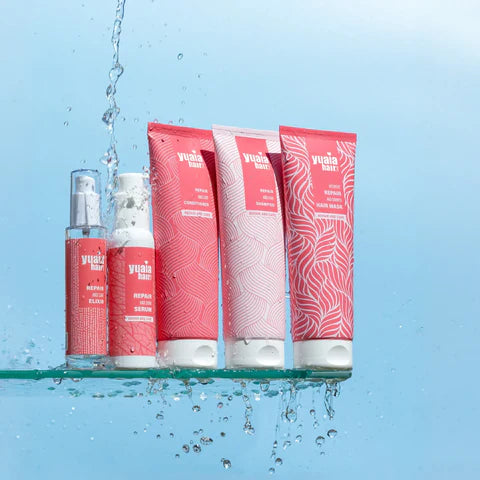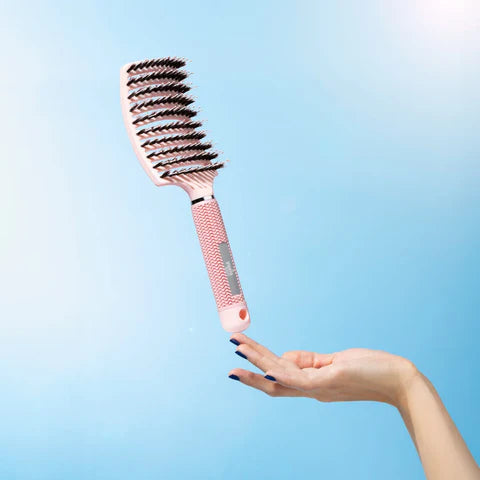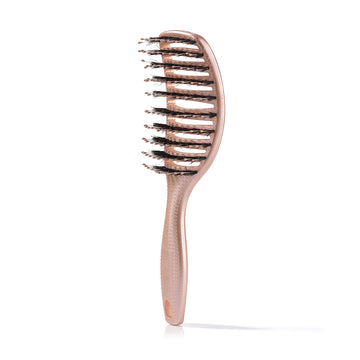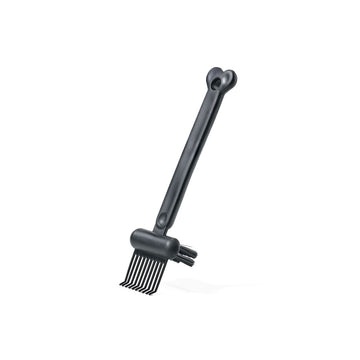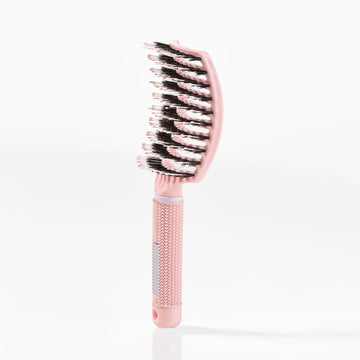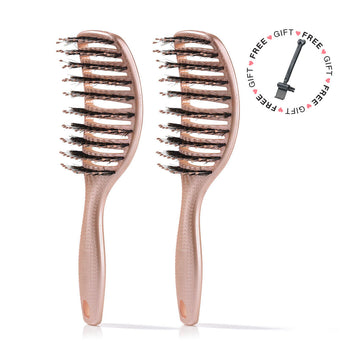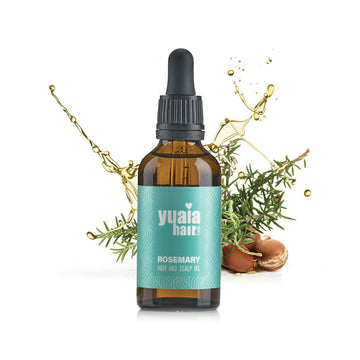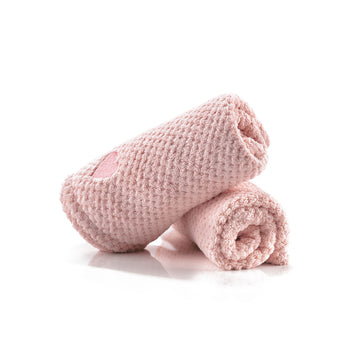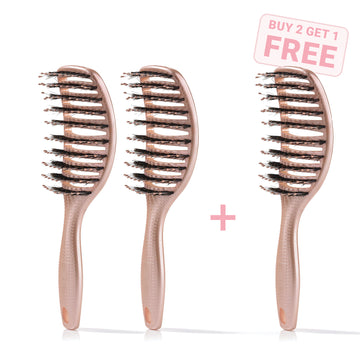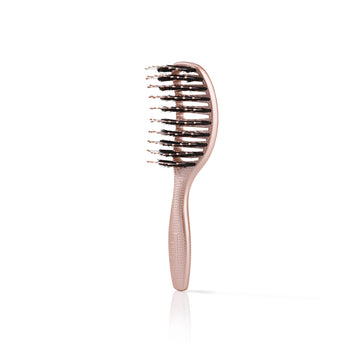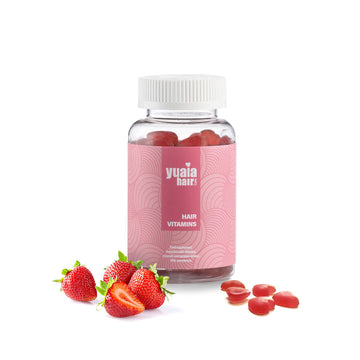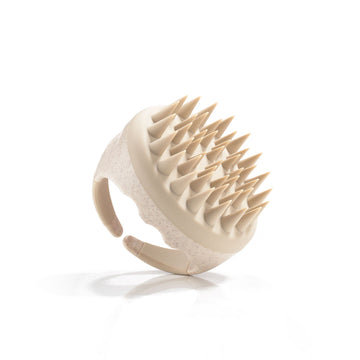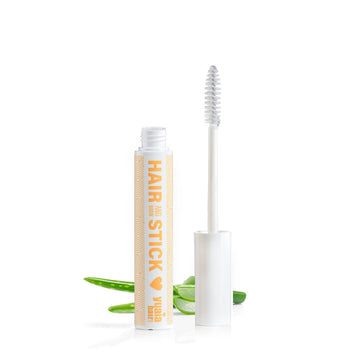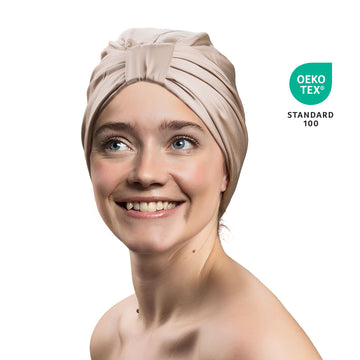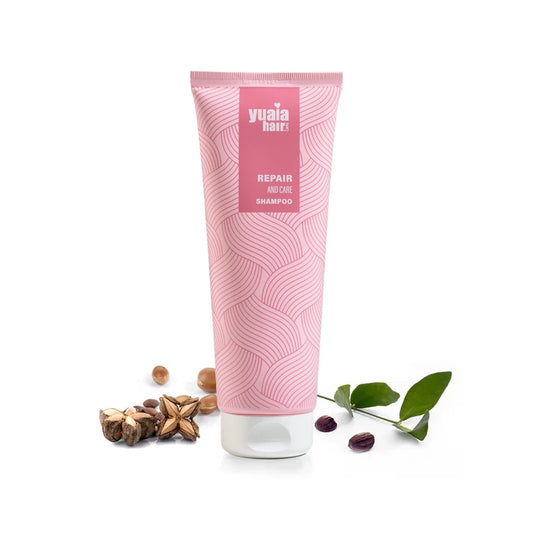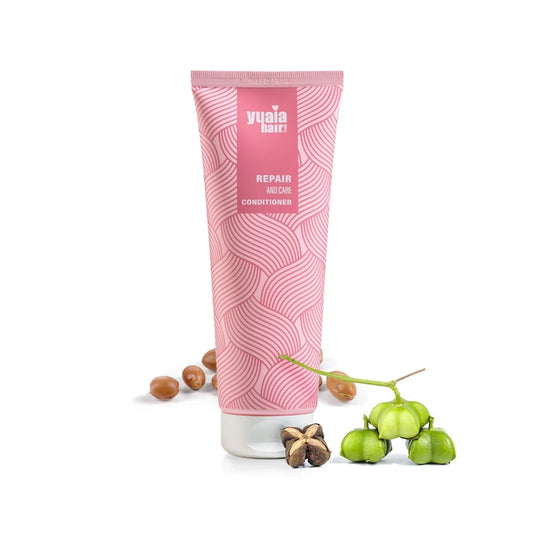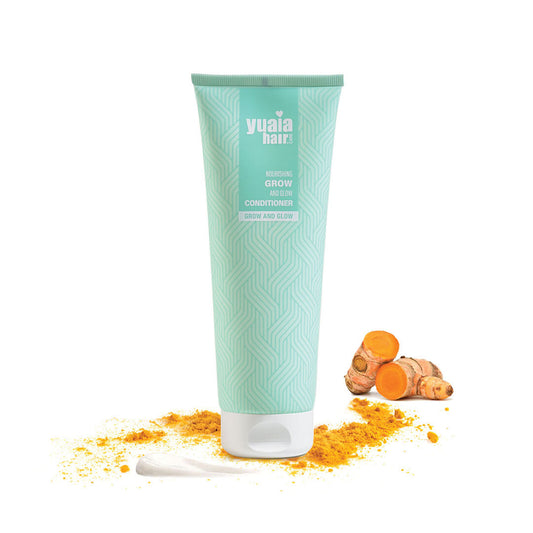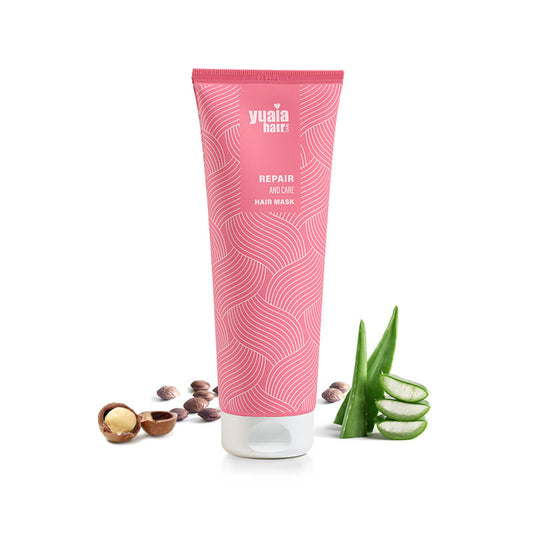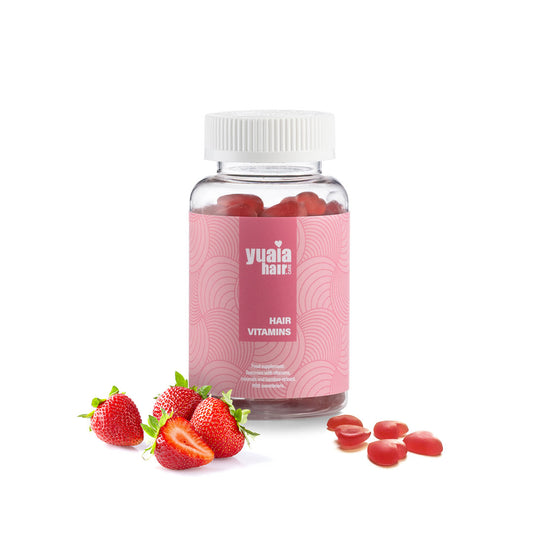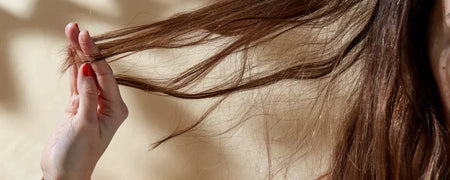
Soorten haarporositeit
Haar met een lage porositeit - Haar met een lage porositeit heeft een dichte en vlakke schaalstructuur waardoor vocht moeilijk kan doordringen. Het vereist producten met lichte en op water gebaseerde ingrediënten om ophoping van productresten te voorkomen en voldoende hydratatie te bieden. Het kiezen van bevochtigende ingrediënten, zoals aloë vera of glycerine, kan ook helpen om vocht in het haar aan te trekken zonder het te verzwaren.
Haar met een gemiddelde porositeit - Haar met een gemiddelde porositeit heeft een evenwichtige schaalstructuur waardoor vocht zonder problemen kan binnendringen. Het kan profiteren van een brede waaier aan haarproducten, maar moet nog steeds bewust zijn van de juiste balans tussen proteïne en hydraterende behandelingen.
Haar met een hoge porositeit - Haar met een hoge porositeit heeft een open schaalstructuur die snel vocht absorbeert. Dit kan leiden tot overmatig pluizen en hardheid in het haar. Haar met een hoge porositeit heeft baat bij producten met intense hydratatie en proteïnebehandelingen zijn nodig om de beschadigde haarstructuur te herstellen en het vocht langer vast te houden. Het gebruik van leave-in conditioners en verzegelende oliën kan ook helpen om het vocht vast te houden.
Wat is haar met een lage porositeit?
Kenmerken van lage porositeit: Haar met een lage porositeit wordt gekenmerkt door zijn dichte en compacte structuur, waardoor het moeilijk vocht kan opnemen en vasthouden. Dit type haar heeft de neiging om zich snel op te hopen met oliën en andere haarproducten omdat het moeite heeft om vocht binnen te laten. De porositeit van je haar kennen kan ongelooflijk nuttig zijn omdat het je helpt producten te kiezen die voldoen aan de unieke behoeften van je haar. Voor haar met een lage porositeit betekent het kiezen van de juiste producten een betere absorptie van verzorgende ingrediënten, het beter vasthouden van vocht en een betere controle over pluizig en springerig haar.
Producttips voor haar met een lage porositeit: Voor de verzorging van haar met een lage porositeit worden lichte producten op waterbasis aanbevolen om het haar niet te verzwaren. Vochtinbrengende leave-in conditioners met bevochtigingsmiddelen zoals aloë vera of glycerine zijn bijzonder doeltreffend omdat ze vocht aantrekken en de hydratatie van het haar verbeteren zonder het te verzwaren.
Wat is medium poreus haar?
Kenmerken van gemiddelde poreusheid: Haar met een gemiddelde poreusheid heeft een matig vermogen om vocht te absorberen en vast te houden. Het kan bestand zijn tegen stylingproducten en heeft een balans tussen elasticiteit en duurzaamheid.
Hoe beïnvloedt medium poreus haar je stylingopties? Haar met een gemiddelde porositeit geeft je de mogelijkheid om te experimenteren met verschillende kapsels omdat het flexibeler is dan haar met een lage porositeit. Het absorbeert ook beter producten en houdt krullen of golven langer vast.
Producttips voor haar met een gemiddelde porositeit: Om de resultaten van je haar met gemiddelde porositeit te maximaliseren, gebruik je lichte producten op waterbasis die het haar niet verzwaren. Vermijd zware oliën of formules op basis van was omdat deze het haar vettig of plakkerig kunnen maken. Gebruik ook regelmatig een diepreinigende shampoo om productophopingen te verwijderen zonder het haar uit te drogen.
Wat is haar met een hoge porositeit?
Kenmerken van hoge porositeit: Haar met een hoge porositeit heeft de neiging om snel vocht op te nemen, maar verliest datzelfde vocht ook weer snel. Dit resulteert vaak in droog en pluizig haar en een verzwakte elasticiteit.
“Problemen” in verband met haarsluiting en hoe ze te verhelpen: Haar met een hoge porositeit kan problemen hebben zoals overabsorptie van producten, waardoor voedende ingrediënten moeilijk in het haar kunnen doordringen. Om dit op te lossen kan het goed zijn om lichtgewicht producten te gebruiken en zware oliën of crèmes te vermijden.
Beste producten voor de verzorging van haar met een hoge porositeit: Enkele van de beste producten voor de verzorging van haar met een hoge porositeit zijn vochtinbrengende shampoos, conditioners en leave-in conditioners. Het is ook belangrijk om regelmatig een dieptebehandeling te gebruiken om de structuur van het haar opnieuw op te bouwen en de poreusheid te verminderen.

Effecten van haarporositeit
De poreusheid van het haar kan een aanzienlijke invloed hebben op het vermogen van het haar om vocht op te nemen. Haar met een lage of hoge poreusheid reageert anders op vocht en producten, dus inzicht in je poreusheidsniveau is de sleutel tot effectieve haarverzorging. Hoe poreuzer het haar, hoe sneller het vocht uit de omgeving en producten absorbeert, wat kan leiden tot droogheid en pluizig haar. Het is belangrijk om haarproducten te kiezen die speciaal samengesteld zijn om het vochtgehalte in poreus haar te verbeteren en op peil te houden.
Poreus haar heeft ook moeite om vocht vast te houden. Omdat de haarschubben op poreus haar niet volledig plat liggen, kunnen ze niet voorkomen dat watermoleculen opnieuw uit het haar ontsnappen. Dit resulteert in droogheid en een gebrek aan glans. Het gebruik van producten met intensieve hydraterende eigenschappen en het vervolgens verzegelen van de schubbenlaag zal bijdragen tot een meer gehydrateerd resultaat bij poreus haar.
Hoe beïnvloedt poreusheid het vermogen van het haar om vocht te absorberen?
Poreusheid speelt een cruciale rol in het vermogen van het haar om vocht vast te houden. Haar met een hoge porositeit heeft de neiging om snel vocht op te nemen, maar ook om het net zo snel weer te verliezen. Aan de andere kant kan haar met een lage porositeit moeite hebben om vocht effectief te absorberen. Om een optimale vochtbalans te behouden, is het belangrijk om verzorgingstechnieken te gebruiken die passen bij het poreusheidsniveau van het haar.
Om een optimale vochtbalans te behouden, is het belangrijk om verzorgingstechnieken aan te passen aan elk haarporeusheidsniveau:
- Haar met een lage porositeit: gebruik lichtgewicht producten op basis van bevochtigingsmiddelen en gebruik warmte tijdens het conditioneren om de schubbenlaag te helpen openen en vocht te absorberen.
- Gemiddelde porositeit haar: een gebalanceerde routine met regelmatige conditioning en af en toe een diepe behandeling kan helpen om de vochtbalans op peil te houden zonder het haar te overbelasten.
- Haar met een hoge porositeit: regelmatig gebruik van diepe conditioners, proteïne behandelingen en afsluitende oliën kunnen helpen om vocht vast te houden en pluis te verminderen.
- Als je deze verschillen begrijpt, kun je je haarverzorgingsroutine aanpassen voor een betere vochtretentie en algemene gezondheid van het haar.
Hoe beïnvloedt de poreusheid het vermogen van het haar om vocht vast te houden?
Kleurtechnologie en haarporositeit spelen een beslissende rol in het vermogen van het haar om kleur te ontvangen en vast te houden. Poreus haar absorbeert de kleurstof sneller, wat kan resulteren in een diepere en intensere kleur. Maar het kan ook leiden tot een ongelijkmatige kleuring en een kortere houdbaarheid van de kleur door een verhoogde pigmentuitloging. Voor betere resultaten is het aan te raden om producten te gebruiken die speciaal ontwikkeld zijn voor poreus haar en die hydraterende ingrediënten bevatten om de kleur langer te behouden. Lees hier meer over haarkleuring.
Tips voor het kleuren van verschillende soorten poreus haar:
- Voor haar met een lage poreusheid: Gebruik warmte tijdens de behandeling verbetert de opname van de kleurstof.
- Voor gemiddeld poreus haar: Het gebruik van een pre-color behandeling kan helpen om de structuur van het haar in balans te brengen voor het verven.
- Voor haar met een hoge porositeit: Geleidelijke toepassing is de sleutel, begin met de meest beschadigde gebieden en werk geleidelijk omhoog in plaats van gelijkmatig.

Hoe beïnvloedt poreusheid het vermogen van het haar om kleur te ontvangen en vast te houden?
Kleurtechnologie en porositeit spelen een beslissende rol in het vermogen van het haar om kleur te ontvangen en vast te houden. Poreus haar absorbeert de kleurstof sneller, wat kan resulteren in een diepere en intensere kleur. Maar het kan ook leiden tot een ongelijkmatige kleuring en een kortere houdbaarheid van de kleur door een verhoogde pigmentuitloging. Voor betere resultaten is het aan te raden om producten te gebruiken die speciaal ontwikkeld zijn voor poreus haar en die hydraterende ingrediënten bevatten om de kleur langer te behouden. Lees hier meer over haarkleuring.
Tips voor het kleuren van verschillende soorten poreus haar:
- Voor haar met een lage porositeit: Gebruik warmte tijdens de behandeling verbetert de absorptie van de kleurstof.
- Voor gemiddeld poreus haar: Het gebruik van een pre-kleuren behandeling kan helpen om de structuur van het haar in balans te brengen voor het verven.
- Voor haar met een hoge porositeit: Geleidelijke toepassing is de sleutel, begin met de meest beschadigde gebieden en werk geleidelijk omhoog in plaats van gelijkmatig.
Aanbevolen haarproducten voor verschillende porositeiten
De poreusheid van je haar speelt een belangrijke rol bij het kiezen van je haarproducten. Voor haar met een lage porositeit worden lichte producten zoals oliën en leave-in conditioners aanbevolen. Voor haar met een gemiddelde porositeit gebruik je best hydraterende shampoo en conditioner en één keer per week een proteïnebehandeling. Hoog poreus haar vraagt om producten met intense hydratatie en voeding, zoals diepwerkende maskers en oliebehandelingen om beschadigd haar te herstellen. Het is belangrijk om de juiste producten te kiezen voor jouw haartype om het gewenste effect op je haar te bereiken.
Lage poreusheid
Voor haar met een lage porositeit gebruik je best lichte conditioners op waterbasis met hydraterende eigenschappen die de dicht opeengepakte haarschubben kunnen penetreren zonder opbouw te veroorzaken. Lichtgewicht leave-in conditioners zijn ook ideaal, omdat ze helpen een gebalanceerd vochtniveau te behouden zonder het haar te overweldigen of vettig te laten aanvoelen.
Kokosolie of een conditioner kunnen nuttig zijn voor pre-poo behandelingen om de hydratatie te verbeteren voor het wassen, vooral als ze worden aangebracht met zachte warmte om de schubbenlaag te helpen openen en de absorptie te verhogen. Deze combinatie van lichte conditioning en strategische behandelingen vóór het wassen zorgt voor de hydratatie die haar met een lage porositeit nodig heeft zonder het te verzwaren.
Gemiddelde poreusheid
Haar met een gemiddelde poreusheid heeft een matig vermogen om vocht te absorberen en vast te houden, wat het een evenwichtige textuur geeft maar het nog steeds kwetsbaar maakt voor schade door chemische behandelingen of frequente styling met hitte. Om haar met een gemiddelde porositeit gezond te houden, is het belangrijk om vochtinbrengende producten te gebruiken die het haar niet verzwaren.
Lichtgewicht balsems en serums zijn uitstekende keuzes, omdat ze het haar voeden zonder dat het zwaar aanvoelt. Shampoos en conditioners op basis van proteïnen zijn ook nuttig, omdat ze het haar helpen versterken en de structuur behouden. Het gebruik van een leave-in conditioner kan extra vocht toevoegen en het aanbrengen van thermische bescherming vóór elke warmtestyling helpt mogelijke schade aan de haarstructuur te voorkomen, waardoor het gladde oppervlak en de elasticiteit behouden blijven.
Hoge poreusheid
Haar met een hoge poreusheid absorbeert producten snel maar heeft moeite om vocht vast te houden, wat vaak leidt tot droogheid, pluizen en breken. Om zeer poreus haar te beschermen en schade te voorkomen, is het essentieel om producten te gebruiken die diep voeden en hydrateren.
Leave-in conditioners zijn bijzonder effectief omdat ze langdurig hydrateren en een beschermende barrière vormen tegen vochtverlies. Oliën met een laag moleculair gewicht, zoals argan- of druivenpitolie, kunnen helpen de schubbenlaag af te sluiten en vocht in te sluiten zonder dat het te zwaar aanvoelt. Proteïnebehandelingen zijn ook goed voor het versterken van de haarvezels en het opnieuw opbouwen van de haarstructuur, waardoor de poreusheid na verloop van tijd afneemt en de algehele veerkracht verbetert.
Hoe de poreusheid van je haar bepalen met tests
De poreusheid van je haar is een belangrijke factor om rekening mee te houden bij het kiezen van je haarproducten. Om de poreusheid van je haar te bepalen, kun je drie eenvoudige tests uitvoeren: de zweeftest, de glijtest en de spraytest. Deze tests helpen bepalen of je haar een lage, gemiddelde of hoge porositeit heeft, wat invloed heeft op welke producten het beste zijn voor je haar.
Drijftest
De floattest is een eenvoudige maar effectieve manier om de poreusheid van je haar te bepalen. Om de drijftest uit te voeren, plaats je een schone haarlok in een kom met water en kijk je wat er gebeurt. Hier zijn enkele aanwijzingen die je uit de drijftest kunt halen:
- Als het haar aan de oppervlakte drijft, heeft het een lage porositeit, wat betekent dat het haar een strak gebonden cuticula laag heeft die vochtopname tegengaat.
- Als het haar langzaam naar de bodem zinkt, wijst dit op een normale of gemiddelde poreusheid, waarbij de schubbenstructuur zorgt voor een evenwichtige vochtopname en -retentie.
- Als het haar snel zinkt of onmiddellijk de bodem bereikt, wijst dit op een hoge porositeit, wat wijst op een open of beschadigde cuticula laag die snel vocht opneemt maar ook weer snel verliest.
Afhankelijk van het resultaat van je floattest kun je je haarproducten aanpassen voor een optimale verzorging. Hier zijn enkele richtlijnen gebaseerd op het poreusheidsniveau:
- Lage porositeit:
- Gebruik lichte en hydraterende producten om build-up en zwaarte te voorkomen.
- Vermijd zware olie en producten met proteïnen.
- Normale porositeit:
- Kies producten op basis van je specifieke behoeften, zoals focussen op volumizing of hydratatie.
- Gebruik regelmatige conditioners en diepe behandelingen.
- Hoge porositeit:
- Focus op herstel en versterking met proteïnerijke producten.
- Vermijd warmtestyling en andere factoren die slijtage kunnen verhogen.
Denk er altijd aan om je routine aan te passen op basis van je eigen haar en experimenteer met verschillende producten om de perfecte balans te vinden. De floattest kan een handig hulpmiddel zijn om inzicht te krijgen in de porositeit van je haar en beter geïnformeerde verzorgingsbeslissingen te nemen.
De Slip 'n Slide test
De Slip 'n Slide test, ook wel bekend als de Slide test, is een eenvoudige methode om de poreusheid van je haar te evalueren door de textuur van je haarlok te onderzoeken. Zo voer je hem uit:
Om te beginnen neem je een enkele lok schoon, productvrij haar. Glijd zachtjes met je vingers over de streng van de punt naar de wortel. Als de lok glad aanvoelt terwijl je omhoog gaat, duidt dit meestal op een lage porositeit, waarbij de haarschubben goed gesloten zijn, waardoor vocht moeilijker kan binnendringen.
Als de haarlok wat ruw aanvoelt of lichte bobbels heeft, wijst dit op een gemiddelde of normale poreusheid, waarbij de haarschubben iets omhoog staan maar toch vrij goed vocht vasthouden. Als de haarstreng echter erg ruw of hobbelig aanvoelt, is dit kenmerkend voor haar met een hoge poreusheid, waarbij de schubbenlaag meer openingen heeft, waardoor vocht gemakkelijk kan ontsnappen na absorptie.
De spraytest
De spraytest, ook bekend als de watertest, is een andere manier om de poreusheid van het haar te bepalen. Begin met het selecteren van een kleine sectie schoon, droog haar en geef het een lichte spray met water.
Als je wat water op een deel van je haar spuit, kun je zien hoe het haar reageert.
- Als het water aan de oppervlakte parelt, wijst dit op haar met een lage porositeit. Haar met een lage poreusheid verzet zich tegen waterabsorptie, waardoor het water eerder bovenop blijft zitten dan erin te dringen.
- Als het water langzaam absorbeert, wijst dit op een gemiddelde of normale poreusheid, waarbij het haar matig water absorbeert en het vocht goed vasthoudt.
- Als het water snel absorbeert, is dit een teken van haar met een hoge poreusheid. Haar met een hoge poreusheid neemt snel vocht op maar kan het net zo snel weer verliezen, wat vaak leidt tot droogheid en pluizig haar.
Door de poreusheid van je haar te kennen, kun je de juiste producten kiezen om het effectief te verzorgen.
 2-4 dagen levering
2-4 dagen levering
 100.000+ tevreden klanten
100.000+ tevreden klanten
 Tevredenheidsgarantie
Tevredenheidsgarantie


